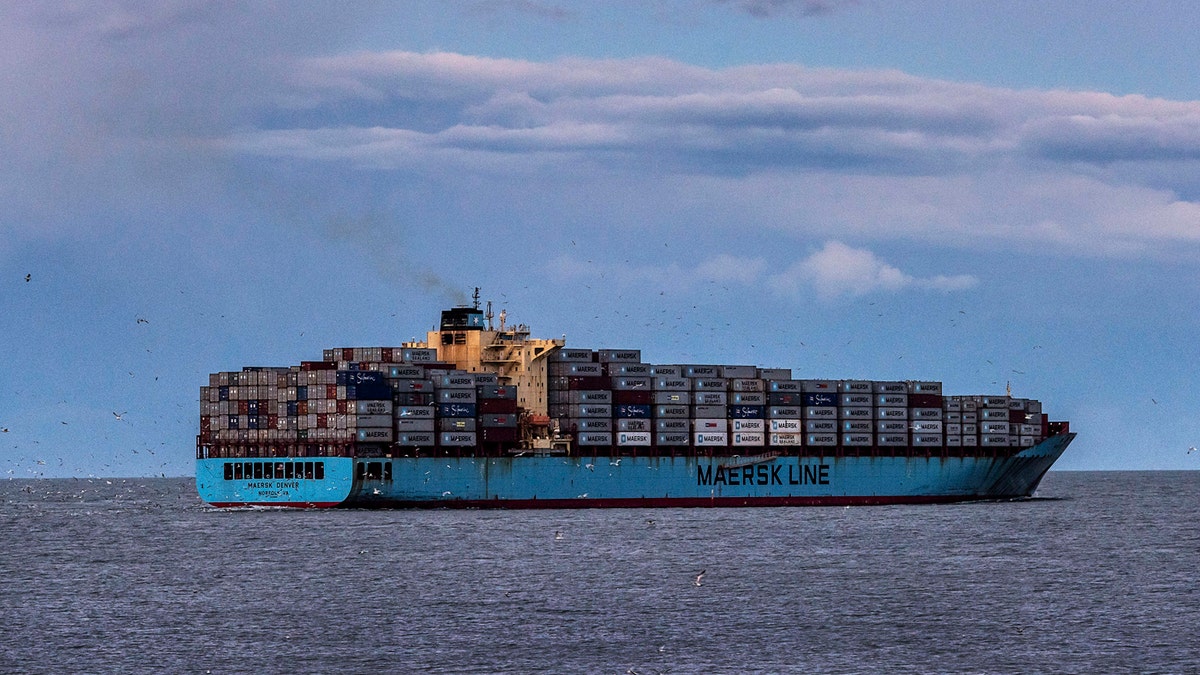
A Maersk container ship is seen departing from Chesapeake Bay. (Getty Images)
The world’s largest container line is about to embark on a trip through the cold Arctic to test a faster shipping method that could become viable as warmer temperatures melt open the Northern Sea Route.
Around Sept. 1, Denmark-based Maersk will send a new container ship—with a reinforced hull and a capacity of 3,600 containers—into the polar sea, reports NPR.
Industry watchers see the trip as a potential tipping point for shipping and the Arctic.
SPEEDY FLIP IN EARTH'S MAGNETIC FIELD COULD CAUSE TRILLIONS IN DAMAGES, SCIENTISTS WARN
As the Earth has warmed, shipping companies have looked at the Arctic as a way to cut down travel time and save money.
Malte Humpert, the founder and senior fellow of the Arctic Institute, a Washington, D.C.-based think tank, said Maersk's decision marks the next step in Arctic's shipping development.
“It's not a major, dramatic shift, it's just a kind of sequential development,” Humpert told NPR. “The ice is melting and more things are becoming possible in the Arctic, and with that, of course ... comes enhanced risk for the environment.”
In a statement to NPR, Maersk says it does “not see the Northern Sea Route as an alternative to our usual routes. We plan new services according to our customers' demand, trading patterns and population centers.”
The company says it is dispatching Venta Maersk in the Arctic on “a trial to explore an unknown route for container shipping and to collect scientific data.”
Humpert said Maersk wants to gain some experience in the Arctic, which will likely open up more possibilities in the future, adding that the Northern Sea Route could slice about two weeks off the journey from Asia to Europe.
'CURSED' ANCIENT EGYPTIAN SARCOPHAGUS REVEALS GRISLY SECRETS
However, cutting travel time does not guarantee cost savings.
Humpert says there is no infrastructure in the Arctic, and unlike the traditional Vladivostok-to-St. Petersburg route through the Suez Canal, there are no transshipment options along the way.
Paul Bingham, a transportation and international trade economist with the Economical Development Research group, says Venta Maersk is an “ice-class vessel,” capable of going through about 3 feet of unconsolidated ice.
He says that makes the ship strong enough to withstand the rigors of the route, but only for about three months of the year.




















